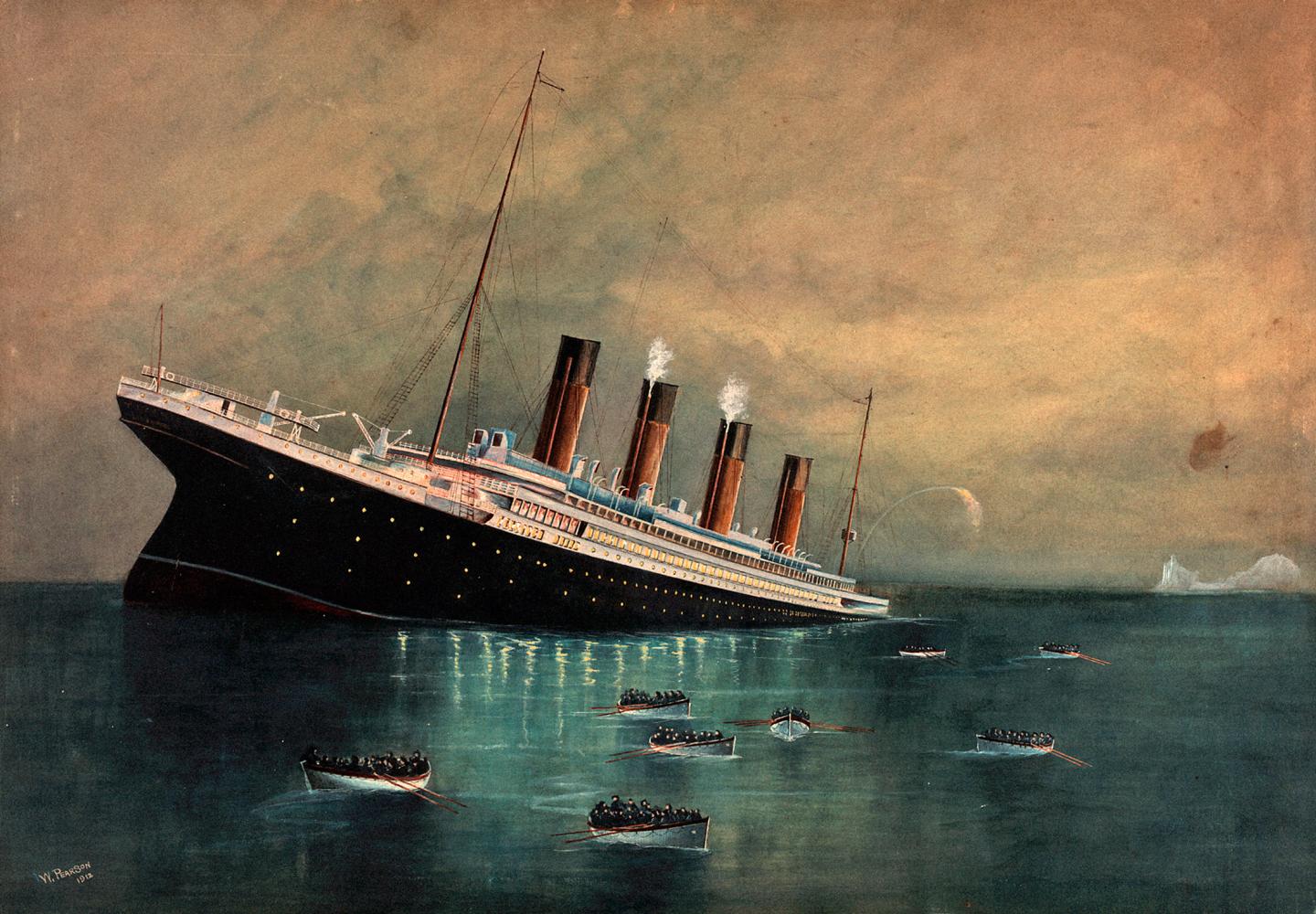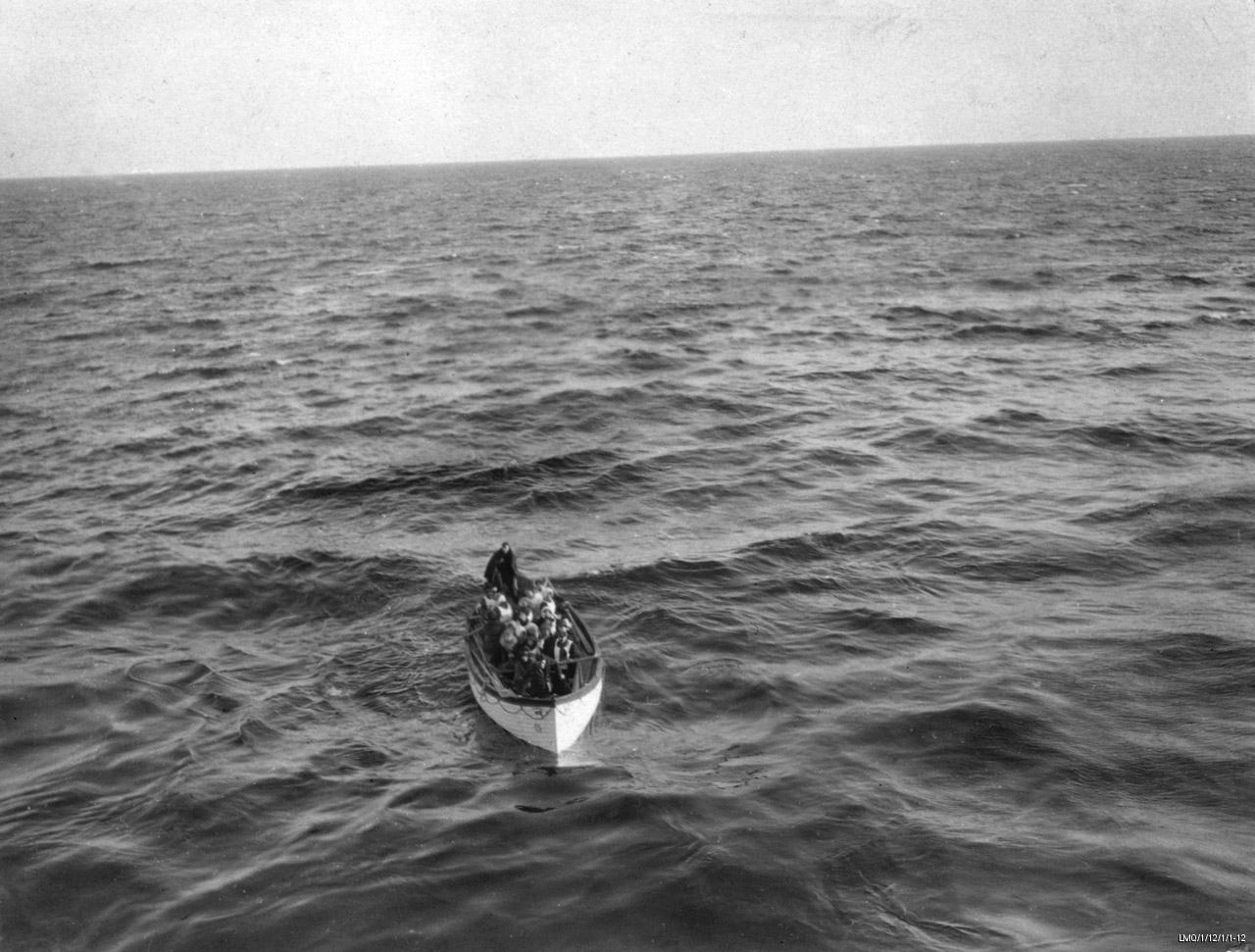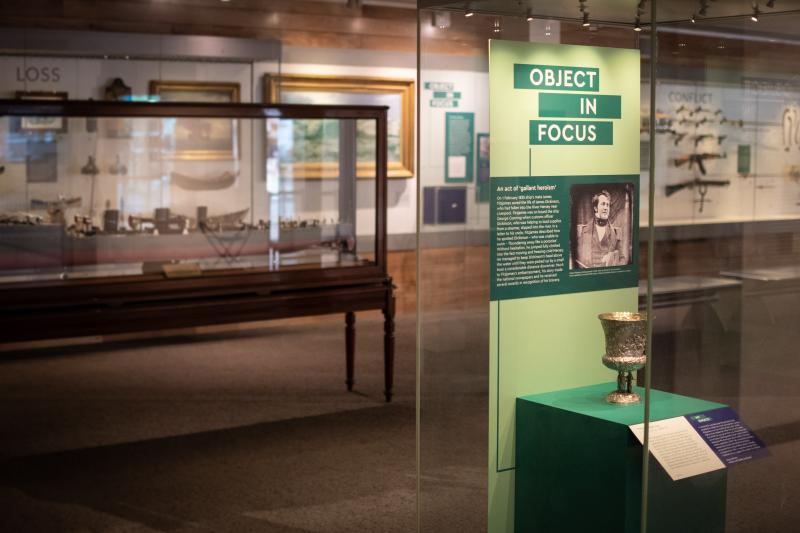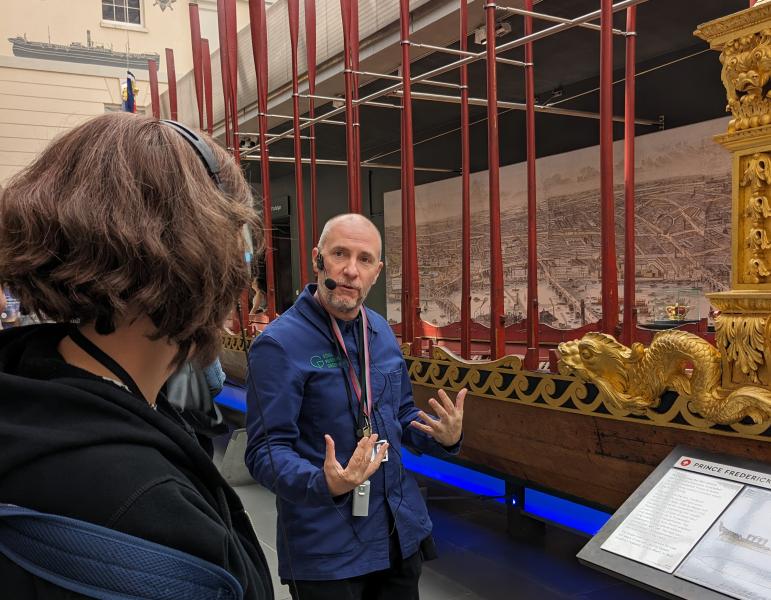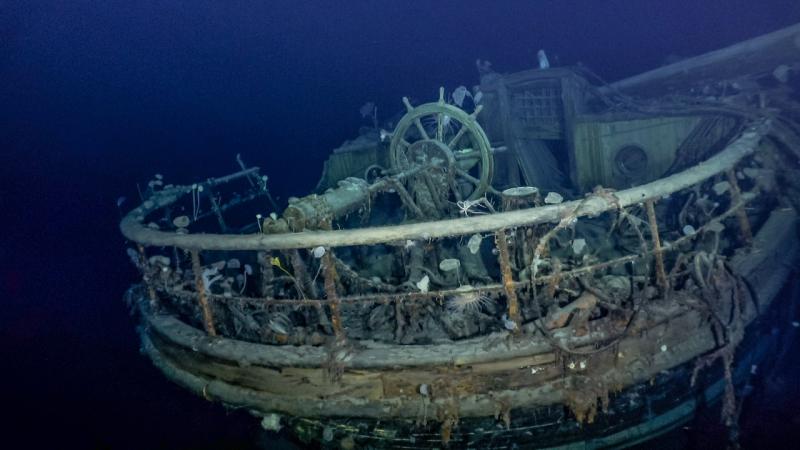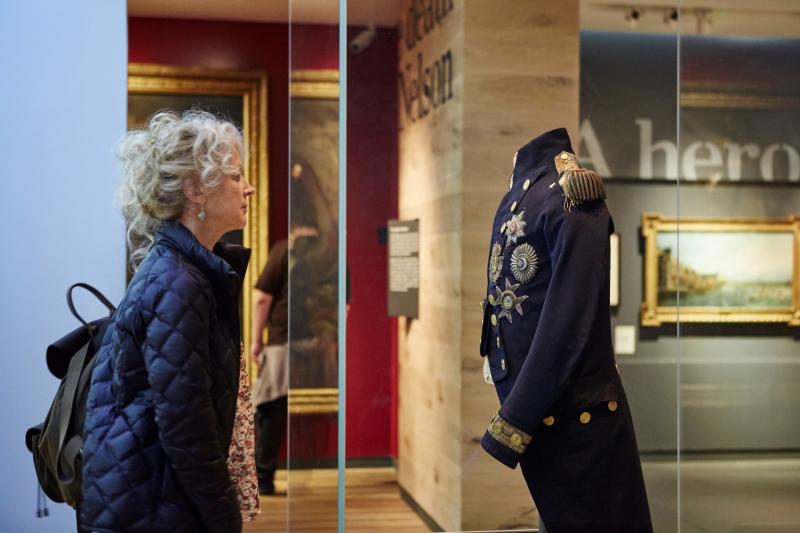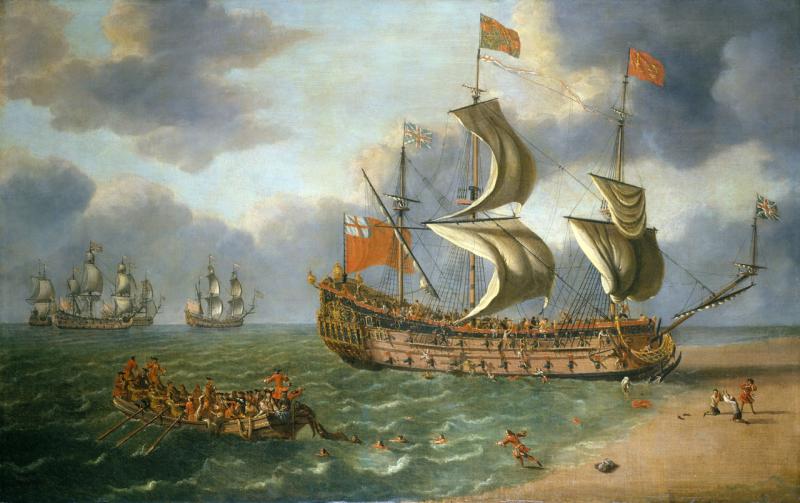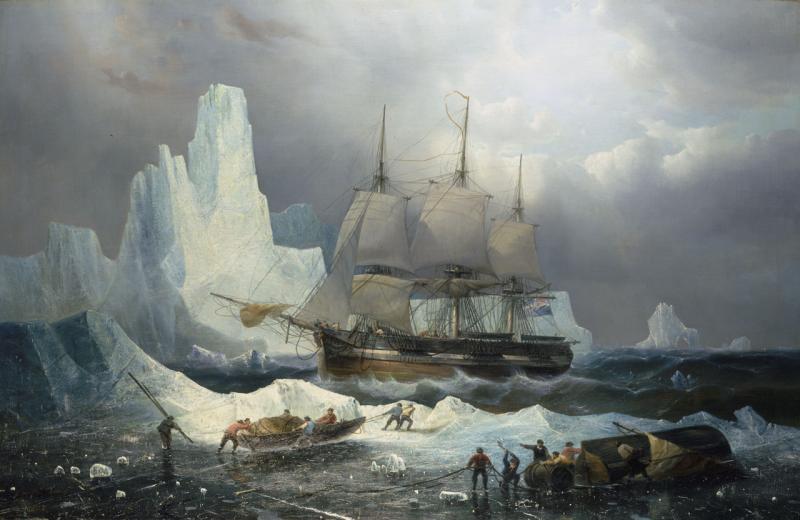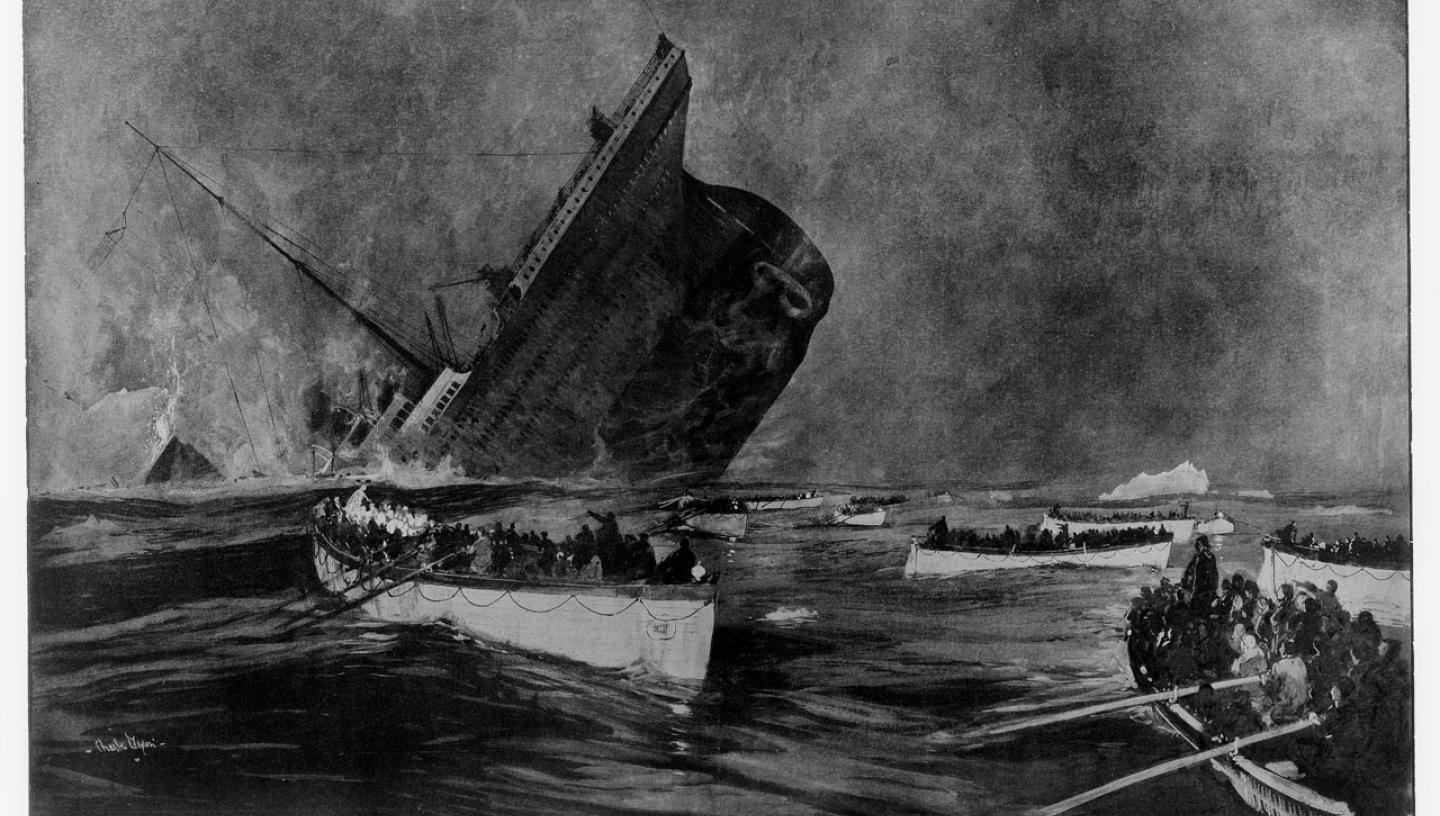
As RMS Titanic sank beneath the waves, a young steward named Cecil Fitzpatrick clung to an overturned lifeboat floating nearby and frantically blew on a whistle.
This small piece of metal would bring him to the attention of the occupants of Lifeboat 12, which included passenger Lillian Bentham. Lillian saved Cecil’s life twice: once by helping to pull him onto the lifeboat, and again by wrapping him in one of her fur coats.
As a token of his gratitude, Cecil gave Lillian all that he had to hand – his whistle.
Later donated into the National Maritime Museum collection, this whistle has been picked out for a special display in the Museum by Visitor and Sales Assistant Suzy as part of the ‘Object in Focus’ programme.
Read on to discover the full story of Cecil and Lillian’s escape from Titanic.
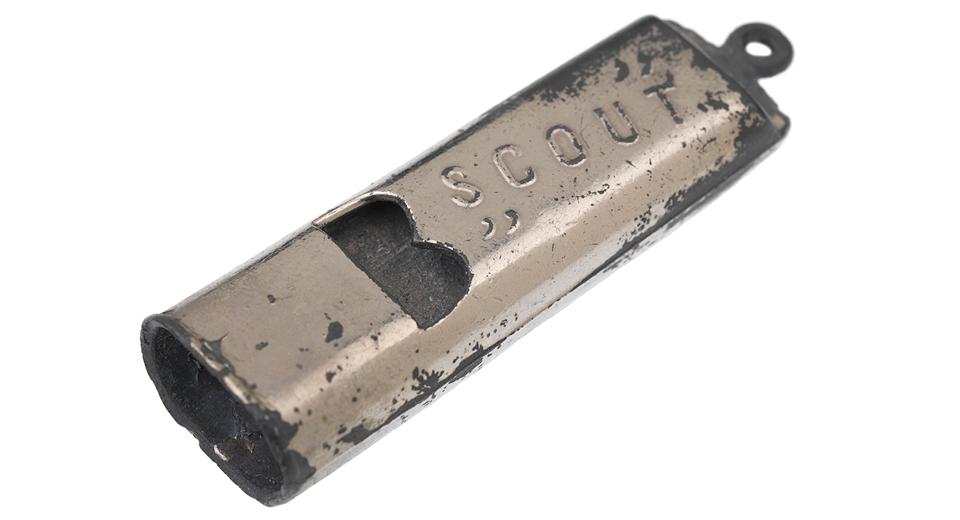
Whistle given from Cecil Fitzpatrick to Lillian Bentham. Currently on display in the Voyagers gallery of the National Maritime Museum.
The Titanic disaster
On the night of 14 April 1912, during its maiden voyage the passenger ship RMS Titanic hit an iceberg in the North Atlantic Ocean. There were around 2,200 passengers and crew on board.
The so-called ‘unsinkable’ liner was equipped with 20 lifeboats, designed to hold around 1,178 people – almost half the number of passengers on board.
As Titanic sank the crew evacuated passengers under the 'women and children first' protocol. Many of the lifeboats were launched before they were full, further limiting passengers’ chances of survival.
Approximately 1,500 people lost their lives. Many perished in the freezing cold waters of the Atlantic Ocean, which was around -2° Celsius.

Cecil
The whistle belonged to Cecil Fitzpatrick, an Irish steward on board Titanic. Cecil was just 21 at the time of the sinking.
Having retired to bed before the ship hit the iceberg at around 11.40pm, Cecil recalls being woken by a fellow crew member with a slap around the face.
Cecil was quoted by the Yorkshire Evening Post as saying, “I went on deck and helped to lower lifeboats and then with the second officer attempted to release collapsible boats on the hurricane deck.”
He was later forced to abandon ship: “As the liner was dipping I jumped overboard in the icy water, and struck out with every effort I could in order to escape the suction.”
He swam for a short time before joining 19 men clinging to an upturned lifeboat, Collapsible B.
The whistle helped Cecil call for help, eventually drawing the attention of those aboard Lifeboat 12.
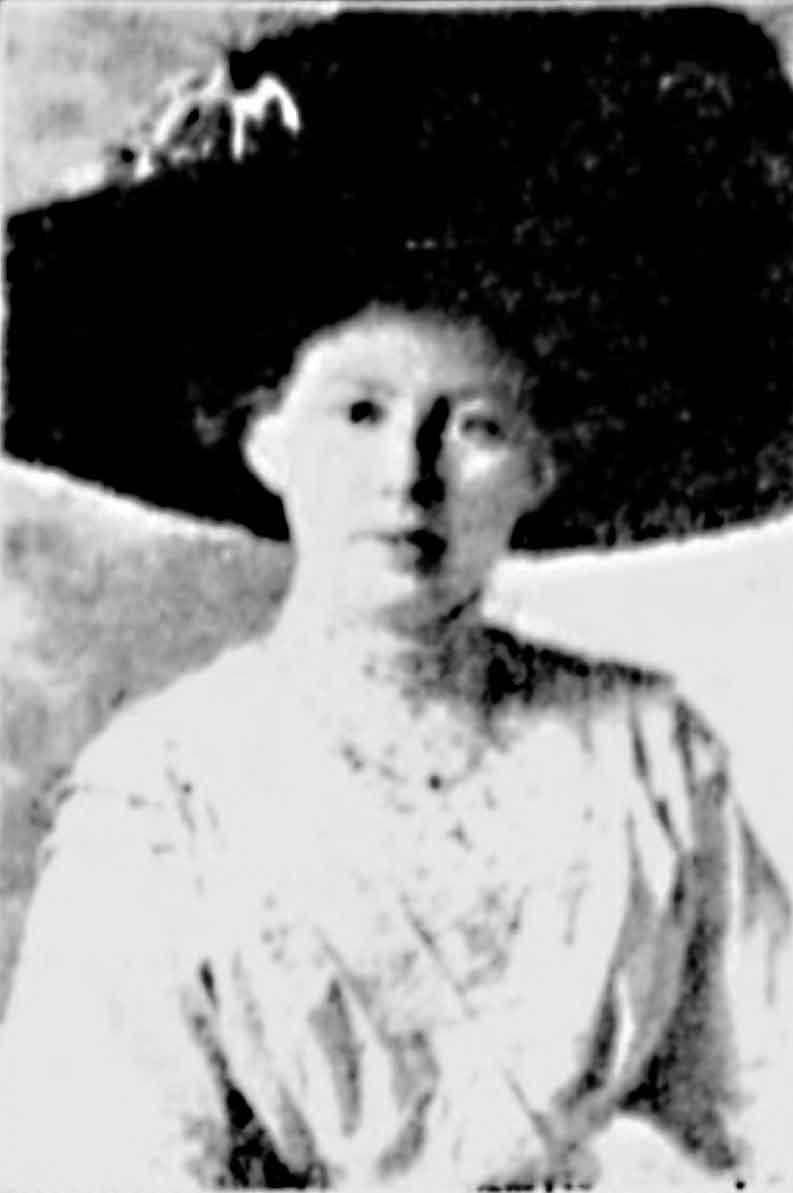
Lillian
On board this already-packed lifeboat was second-class passenger Lillian Bentham.
Lillian was sailing to New York as part of a party of 11. Only three would survive the tragedy.
Lillian recalls watching the ship break in two from the lifeboat, after which the crew turned back to look for survivors. Following the sound of the whistle, they found Cecil and the others on Collapsible B.
Lillian helped to pull the men aboard her lifeboat one by one. She was later quoted, "I helped the seamen pull those 20 men into our boat, which already had more than 30 in it. We had to pile them on the bottom of the boat, like so many sacks of flour, because they were unable to do anything to help themselves. The boat was very much overloaded when the task was finished."
Noticing that Cecil was shivering, Lillian wrapped him in one of the fur coats she was wearing - potentially saving him from hypothermia.
In gratitude for her help and kindness, Cecil gave her the whistle.
Lillian later wrote in a letter, now held at the Caird Library of the National Maritime Museum: "If you recall it was a whistle that saved the lives of the men and I have the honour of being the proud possessor of the whistle.”
Cecil and Lillian were transferred aboard RMS Carpathia, which arrived around two hours after the sinking, and taken to safety in New York. Both lived long lives: Cecil lived into his 70s and Lillian into her 80s.
An object to treasure
Visitor and Sales Assistant Suzy Jenvey explains why she chose this item for the Object in Focus programme:
Inevitably, most of the relics from the Titanic tragedy are associated with death. The reason I love this whistle so much is that it commemorates survival - not only of its owner Cecil Fitzpatrick, but also of Lillian Bentham, the lady whose heroic actions helped save his life.
Both were young - she was 19 and he was 21. One was a passenger, one a crew member. Their story shows us how people can reach out to each other in moments of terror.
Come and see the whistle for yourself, alongside another of our Objects in Focus, in the Voyagers gallery of the National Maritime Museum.
You can also request to see Lillian's handwritten letter in which she references the whistle by booking a free visit to the Caird Library, the world's largest maritime library and archive collection.
Find more stories you might like
Main image: illustration by Charles Dixon, published in the Graphic Supplement of 27 April 1914
